#french cooking recipe
Explore tagged Tumblr posts
Text
Crèmes au chocolat noir sans œuf

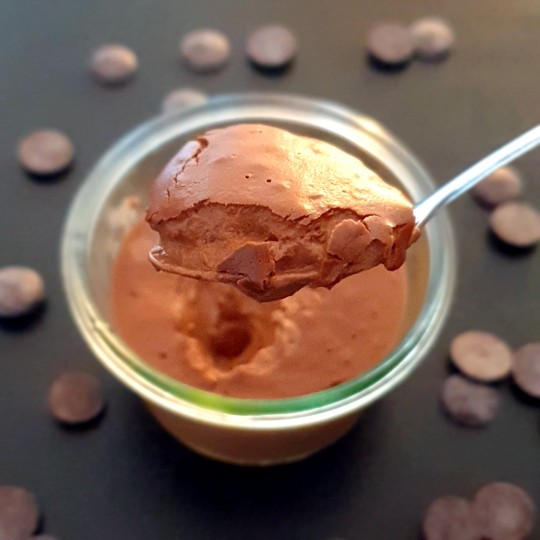
#Chocolat#chocolat noir#crème au chocolat#crème au chocolat noir#crème au chocolat sans oeuf#crèmes au chocolat sans oeuf#chocolate cream#dark chocolate cream#chocolate cream recipe#dark chocolate cream recipe#recette de crème au chocolat#recette de crème au chocolat sans oeuf#crème dessert au chocolat#crème dessert facile au chocolat#pot de crème dessert au chocolat#pots de crème dessert au chocolat#petits pots de crème dessert au chocolat#nogluten#gluten free#french cooking recipe
2 notes
·
View notes
Text

Coq au vin
#coq au vin#chicken#stew#dinner#food#meal#main course#mashed potatoes#carrots#french food#wine#red wine#chicken stew#tasty#foodporn#delicious#cooking#food photography#foodgasm#recipes
2K notes
·
View notes
Text

Every aspic of this is terrible.
The Art of French Cooking - 1962
#chicken#aspic#Cook book#cookbook#1962#1960's#1960s#recipes#French cooking#ephemera#funny#humor#humour
2K notes
·
View notes
Text

Berry French Toast
#berry french toast#berries#blueberry#blackberry#strawberries#cherries#french toast#breakfast food#breakfast for dinner#breakfast#brunch#december#fall recipes#winter recipes#toya's tales#style#toyastales#toyas tales#fast food#foodie#food photography#foodporn#foodpics#food porn#food pics#food#cooking#home & lifestyle#comfort food#maple syrup
376 notes
·
View notes
Text
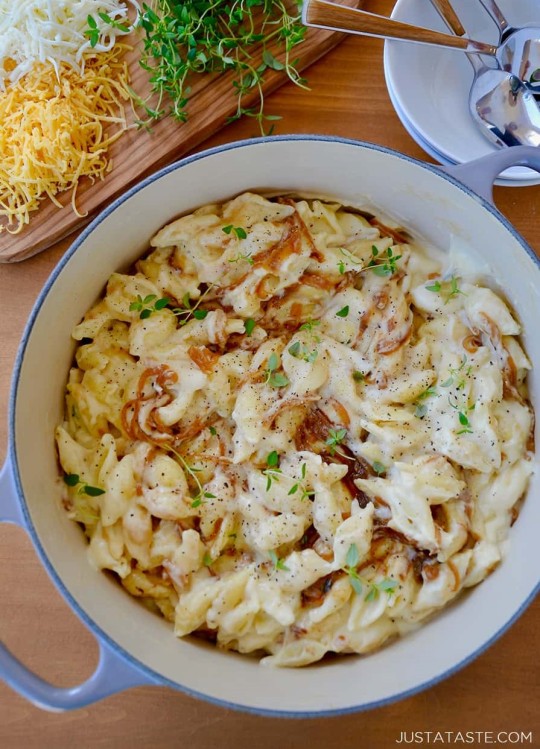
French Onion Mac & Cheese | Just a Taste
757 notes
·
View notes
Text
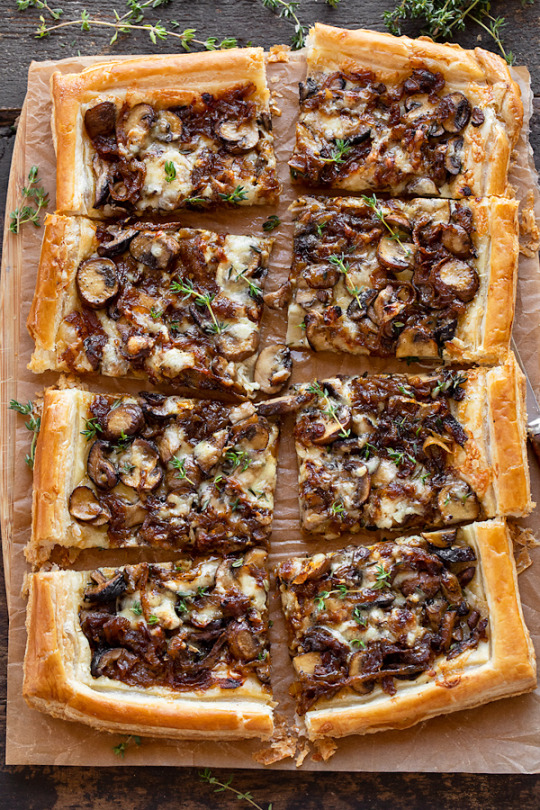
french onion mushroom tart
#food#delicious#tasty#lunch#dinner#appetizer#recipe#cooking#french onion#mushroom#tart#pastry#baking#onion#caramelized onions#cheese#cheesy#rustic#1k
2K notes
·
View notes
Photo
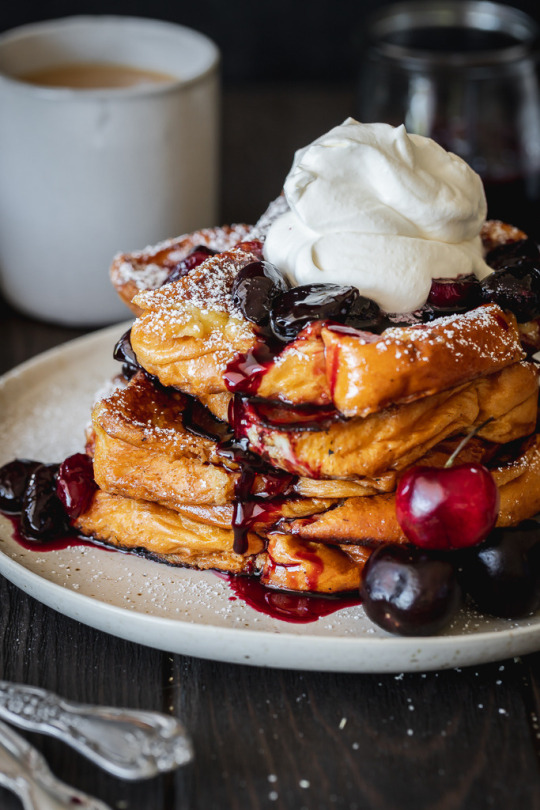
Balsamic Cherry Brioche French Toast
More recipes
#recipe#niftyrecipe#cooking#foodgram#foodporn#french toast#breakfast#cherry toast#cherry#balsamic cherry
4K notes
·
View notes
Text

Crack Burgers
#burgers#beef#bacon#cheese#food#burger#aioli#meal#main course#fries#french fries#cheeseburger#tasty#foodporn#delicious#cooking#food photography#foodgasm#recipes#dinner
105 notes
·
View notes
Text
Writing Notes: Food (5 Mother Sauces)
for writing your cooking and other food-related scenes
Mother sauces, first classified by French Chef Marie-Antoine Carême and later codified by Auguste Escoffier, are the starting points for countless ‘daughter’ sauces in French cuisine.
In 1833, Marie Antoine Carême published a classification of French sauces in his reference cookbook L’art de la cuisine française au XIXe siècle ("The Art of French Cuisine in the 19th Century").
These foundations are essential to traditional French culinary creations, but by adding various ingredients can be transformed into a wide range of sauces ready to enhance and complete different dishes.
The Roux
Master the making of roux (“roo”), and you will have a variety of French sauces at your fingertips.
Roux is basically cooking fat and flour together before adding in the liquid you want to thicken.
The fat used is generally butter, but oil or other fats can also be used.
The fat and flour cook together to cook out some of the floury, pasty flavor in the flour.
Cook the mixture for 5 minutes for white, 20 minutes for blond, or 35 minutes for brown roux.
The darker the roux, the nuttier the flavor.
When the liquid is added to the roux, and everything comes to a boil, the flour thickens the liquid, and you end up with sauce.
Four out of the five mother sauces are thickened by roux.
The 5 French “Mother Sauces”
1. Béchamel (“bay-sha-mel”)

Also known as a white sauce, this is a white roux whisked with milk or other dairy to make a white sauce.
White and just a tad bit thicker than heavy cream.
The flavoring is up to you, although the French like to do a little salt and pepper, while the Italians like to throw on a pinch of nutmeg.
Another traditional flavoring option is to steep the milk with a whole onion that has been studded with a couple of cloves and a bay leaf before being combined with the roux.
By itself, béchamel is quite bland, which is why it is usually cooked with other ingredients and not used as a finishing sauce.
Béchamel is classically served with eggs, fish, steamed poultry, steamed vegetables, pastas, and veal.
The sister sauces include:
Mornay = béchamel + Gruyère + Parmesan + butter
Cheese = béchamel + cheddar + Worcestershire sauce + dry mustard
Soubise = béchamel + onions + butter
2. Velouté (“vuh-loo-tay”)

It’s made similar to a béchamel, except in this case, stock replaces the milk.
A velouté is a blond roux whisked with chicken, turkey, fish, or any other clear stock.
The resulting sauce takes on the flavor of the stock, and the name is derived from the French word for velvet, which suitably describes this smooth but light and delicate sauce.
Commonly, the sauce produced will be referred to by the type of stock used, for example, chicken velouté.
Velouté is classically served with eggs, fish, steamed poultry, steamed vegetables, and pastas.
The sister sauces include:
Bercy = velouté +shallots + white wine + fish stock + butter + parsley
Normandy = fish velouté + fish stock + mushrooms + liaison
Allemande = veal/chicken velouté + liaison
Suprême = chicken velouté + cream
3. Espagnole (“es-puhn-yohl”)

Commonly known as brown sauce, this rich sauce is made using beef or veal stock, tomato puree, and mirepoix (meer-ph), which is a combination of diced carrots, celery, and onions, all thickened with a very dark brown roux.
If you’ve heard of demi-glace (deh-mee-glass), it’s nothing more than equal parts of Espagnole sauce and brown stock that has been reduced by half for an even more flavorful sauce.
Espagnole is rarely served on its own due to the strong flavors.
Espagnole is classically served with roasted meats like beef, veal, lamb, and duck.
The sister sauces include:
Bordelaise = demi-glace + red wine + shallots + bay leaf + thyme + black pepper
Châteaubriand = demi-glace + mushrooms + shallots + lemon juice + cayenne pepper + tarragon + butter
Madeira = demi-glace + Madeira wine
Mushroom = demi-glace + mushroom caps
4. Hollandaise (“hol-uhn-dehz”)

This is the one mother sauce not thickened by a roux.
Hollandaise sauce is an emulsion of butter and lemon juice or vinegar using egg yolks as the emulsifying agent (to bind the sauce), usually seasoned with salt and a little black pepper or cayenne pepper.
Heat control is essential here to prevent curdling of the sauce, and therefore, it is usually done in a double boiler.
Hollandaise sauce is classically served with eggs (Eggs Benedict), vegetables (especially asparagus), light poultry dishes, and fish.
The sister sauces include:
Béarnaise = hollandaise + shallots + tarragon + chervil + peppercorns + white wine vinegar
Chantilly = hollandaise + whipped heavy cream. The tomato sauce is classically served with pasta, fish, vegetables, polenta, veal, poultry, bread, and dumplings such as gnocchi.
5. Tomate (“toe-maht”)

Sauce tomate, better known as tomato sauce, is based on tomatoes.
A roux is traditionally used in making tomato sauce, but many chefs skip it because the tomatoes themselves are enough to thicken the sauce.
The classic sauce tomate is made with salted pork belly, onions, bay leaves, thyme, pureed or fresh tomatoes, roux, garlic, salt, sugar, and pepper.
If you don’t want to get that fancy, you can leave out the pork belly and roux to make a standard tomato sauce.
The sister sauces include:
Creole = tomato sauce + onion + celery + garlic + bay leaf + thyme + green pepper + hot sauce
Spanish = creole sauce + mushrooms + olives
Milanaise = tomato sauce + mushrooms + butter + cooked ham
Sources and other related articles: 1 2 3 4 5
If these notes inspire you in any way, please tag me, or leave a link in the replies. I would love to read your work!
More: On Food
#writing notes#food#mother sauces#writeblr#writers on tumblr#writing prompt#poets on tumblr#spilled ink#dark academia#studyblr#light academia#literature#recipe#cooking#poetry#lit#french cuisine#writing reference#writing resources
82 notes
·
View notes
Text


TEMPLAR BOAR WITH CAMELINE SAUCE (14th c.)
This past Thursday, the Corpus Christi public holiday in my part of Germany, known here as Fronleichnam, gave me a little extra time to make another Tasting History dish: Templar Boar with Cameline Sauce. The diet, eating habits, and table manners of the Templars were governed by strict rules, including only eating meat three times a week (two meat meals on Sundays). This dish was one of those they would have eaten for one of their meat meals during the 14th century. The spices present in the sauce would have been accessible to them during the crusades, but Cameline Sauce did become a popular dish in much of medieval Europe eventually. This dish is based on two 14th century primary sources: Le Viandier de Taillevent by Guillaume Tirel and Le Ménagier de Paris, a treatise written by an older man (as yet unnamed) to teach his 15-year-old bride how to run his household and please him, in every way (...yikes). The sauce, Cameline, is named as such due to the rich brown colour, which looks like the wool of a camel, also known as cameline. I chose to make this recipe next because I haven't made boar before, and the rich, silky, brown colour of the sauce made it look really tasty. See Max’s video on how to make it here or see the ingredients and process at the end of this post, sourced from his website.
My experience making it:
I made a couple changes to the modern recipe below. I used boar goulash pieces instead of tenderloin, because it was the only form of boar I could find at my grocery store. The white wine I used (and drank with dinner) was a dry Riesling from the Mosel Valley in Germany. The red wine was a Bordeaux Merlot. I used saffron powder instead of threads, and I did opt to add the optional tablespoon of red wine vinegar. the white bread I used was a classic French baguette.
I also made a couple changes to the method. Because I used French baguette, which has quite small slices, I hollowed out about half the baguette (since baguettes are mostly crust). I also simmered the sauce for much longer than Max says to, because it wasn't quite the thickness I was looking for. Otherwise, I followed Max's recipe exactly, probably to the detriment of my boar. Because I had used goulash pieces instead of tenderloin, I probably should have adjusted how I cooked the boar to accommodate these smaller pieces. Unfortunately, I didn't, and as a result, I was left with very chewy, dry boar. Basically, the sauce was the saving grace of the boar! I served the boar and Cameline sauce with some green peas, garlic bread, and a glass of the dry Riesling wine.
My experience tasting it:
I already knew I had ruined the texture of the boar, but I hoped that the sauce would help. I warned my husband. Luckily, the Cameline sauce did a lot of heavy-lifting to bring some moisture back to the board. The sauce turned out wonderfully - a beautiful, silky brown. Flavour-wise, it reminded me of a jus, but more heavily-spiced. I was worried the Cameline sauce would end up tasting sweet due to the brown sugar and several spices that are more often used in baking, but in fact, the spices were well balanced by the taste of the wine and vinegar. The sauce also went really nicely with the peas, and I imagine would also have tasted good with potatoes or other red meats. My husband and I dipped the garlic bread in it as well, which was really tasty. It went alright with the dry boar, but I would like to use the sauce with another, more tenderly-cooked meat. We had leftover Cameline sauce, so we will probably try that again tonight. If you end up making it, if you liked it, or if you changed anything from the original recipe, do let me know!
Links to harder-to-find ingredients:
Saffron
Templar Boar with Cameline Sauce original recipes (14th c.)
Sourced from Le Viandier de Taillevent by Guillaume Tirel and Le Ménagier de Paris respectively.
“Sanglier: Fresh Wild Boar Venison. Cooked in wine and water and boiled again; eaten with Cameline Sauce.”
— Le Viandier de Taillevent, 14th century
“Cameline. Note that in Tournai, to make cameline they grind ginger, cinnamon, saffron, and half a nutmeg, moistened with wine then taken out of the mortar. Then grind in a mortar untoasted white breadcrumbs that have been soaked in cold water, moisten with wine and strain. Then boil everything and finish with brown sugar, and that makes winter cameline. In the summer, they do the same but it is not boiled at all. ”
— Le Ménagier de Paris, 14th century
Modern Recipe
Based on Le Viandier de Taillevent by Guillaume Tirel, Le Ménagier de Paris, and Max Miller’s version in his Tasting History video.
Ingredients:
Boar tenderloin
Olive oil for searing
Equal parts wine and water for boiling
1 thick slice of white artisanal bread without crust
1 ¼ cups white wine
¼ cup red wine
1 tsp ginger
2 tsp cinnamon
½ tsp nutmeg
Pinch of saffron threads
2 tbsp brown sugar
Pinch of salt
1 tbsp red wine vinegar (optional)
Method:
De-crust the bread and break it into small pieces. Soak the bread in water for a few hours, then pour in the red wine for the sauce.
Heat olive oil in a pot then sear the boar on all sides.
Remove it from the pot and boil equal parts wine and water, then add the boar back in and boil, covered, for 10-15 minutes or until fully cooked. Then let it rest.
To make the sauce, mix the spices and white wine. Strain the bread/wine mixture from earlier into a saucepan, then press the bread through the strainer.
Add the spiced wine mixture and bring to a simmer. Let simmer for 15 minutes, or until half reduced, then add the sugar and salt, and if you want, a tablespoon of red wine vinegar. Simmer until thickened.
Slice the boar and pour the sauce over it. Optionally, serve with roasted chestnuts and wine.
#14th century#max miller#tasting history#cooking#tasting history with max miller#keepers#medieval meals#boar#french recipes#europe#Templar#crusades#Cameline Sauce#Sauces#meat#Le Viandier de Taillevent#Le Menagier de Paris#Guillaume Tirel#Europe#France
79 notes
·
View notes
Text

Vegan Parmesan Crusted Potato Wedges
#savoury#lunch#dinner#potato#potatoes#chips#french fries#wedges#potato wedges#Parmesan#junk food#comfort food#Super Bowl#superbowl#soy free#nut free#gluten free#recipe#recipes#food#vegetarian#veganism#junkfood#vegan#plantbased#plant based#dairy free#glutenfree#cooking#chef
29 notes
·
View notes
Text

Boneless Beef Short Ribs Bourguignon are slow-cooked in red wine along with bacon, onions, carrots, mushrooms, and herbs for a deep, rich flavor that perfectly complements the beef. Serve with mashed potatoes for a French-inspired meal that your guests will rave about!
https://www.fromachefskitchen.com/slow-cooker-beef-short-ribs-bourguignon/
36 notes
·
View notes
Text

Apple pie french toast
#french toast#apple#apple pie#breakfast#food#dessert#apples#toast#cinnamon#bread#sweet food#sweet#sweets#tasty#foodporn#delicious#cooking#food photography#foodgasm#recipes
1K notes
·
View notes
Text
Easy puff pastry breakfast quiche
#quiche#puff pastry#breakfast#brunch#food#mushrooms#bacon#spinach#eggs#cheese#bacon quiche#baking#french food#tasty#foodporn#delicious#cooking#food photography#foodgasm#recipes#recipe#lunch
59 notes
·
View notes
Text
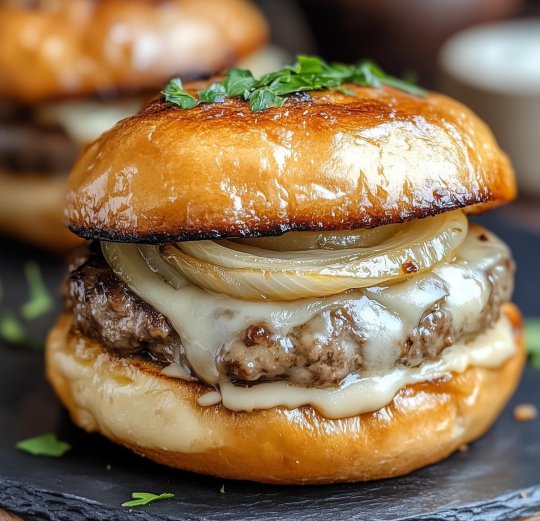
French Onion Burgers
#French Onion Burgers#burgers#french onion#onions#cheeseburger#sandwich#game day#game night#super bowl#potluck dinner#dining and entertaining#eating#cooking#munchies#toya's tales#style#toyastales#toyas tales#november#fall recipes#beef recipes#fast food#food photography#foodpics#foodporn#foodie#food porn#food pics#food#lunch
367 notes
·
View notes
Text

Cheeseburger Hot Dogs | All Things Cooking
166 notes
·
View notes